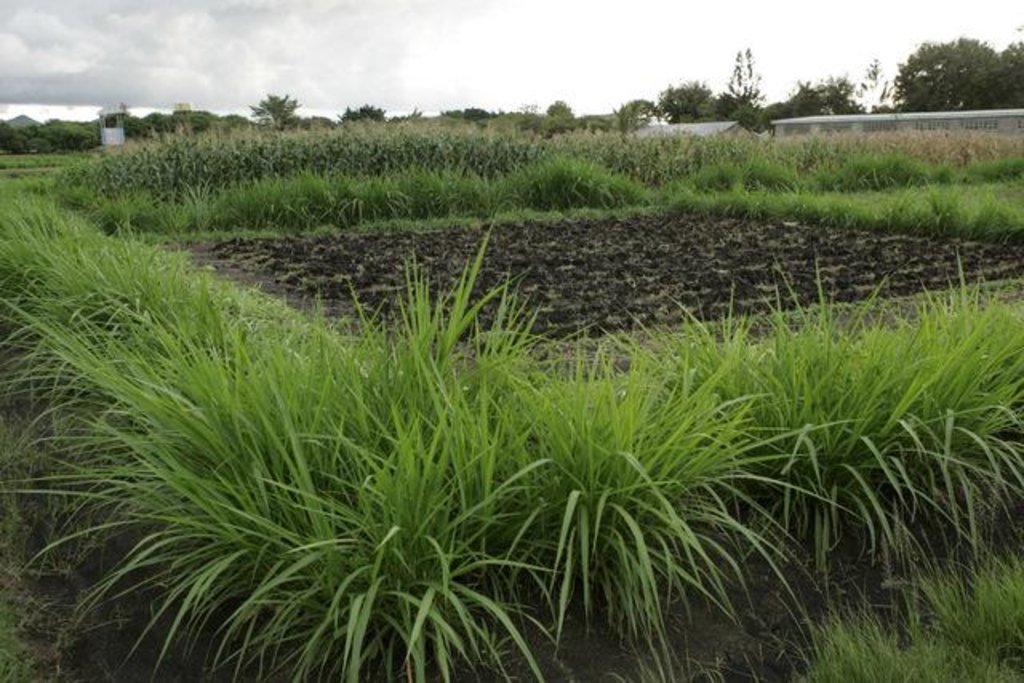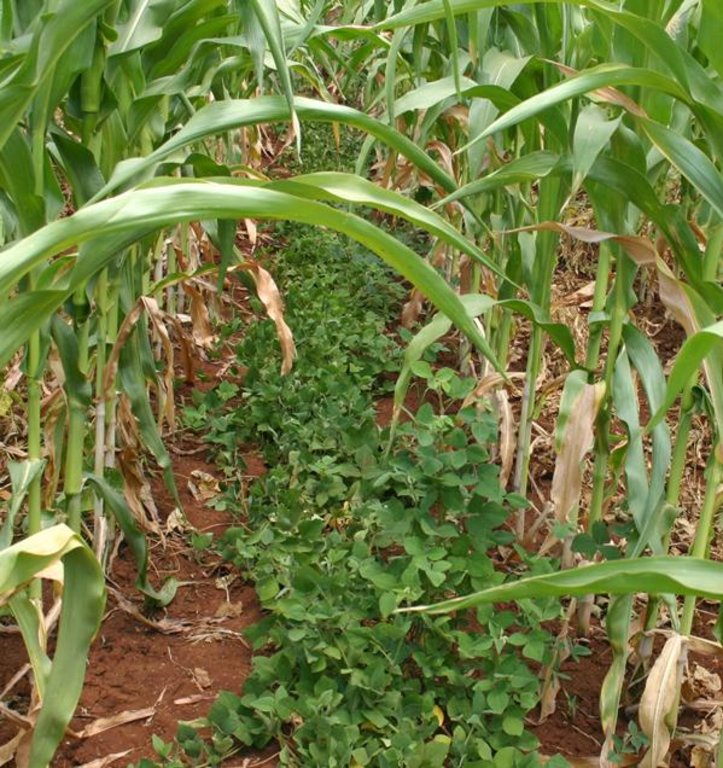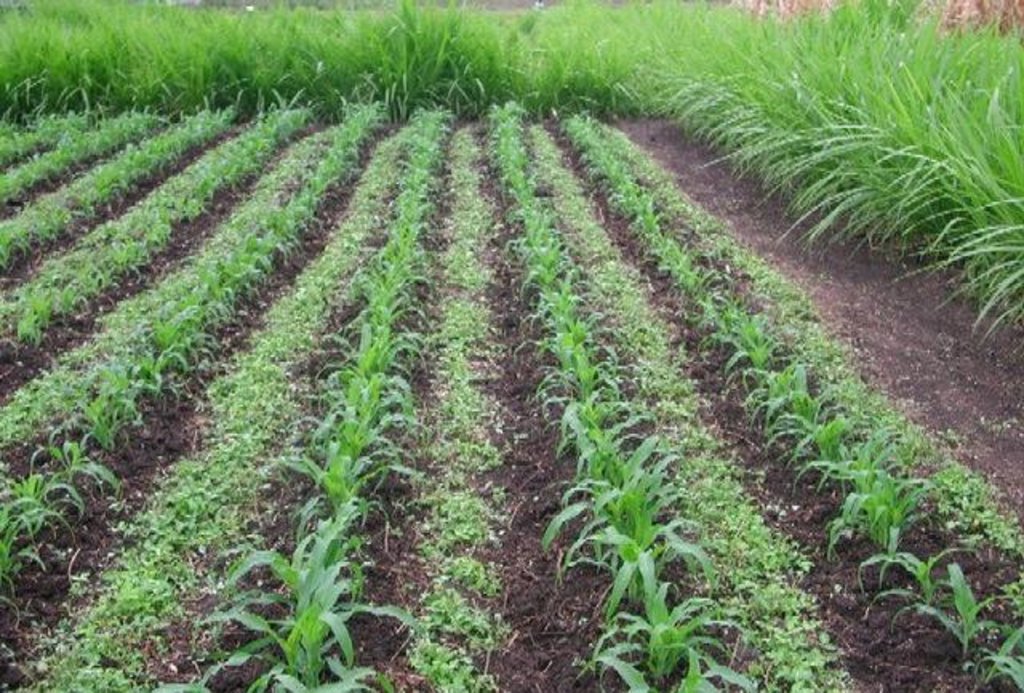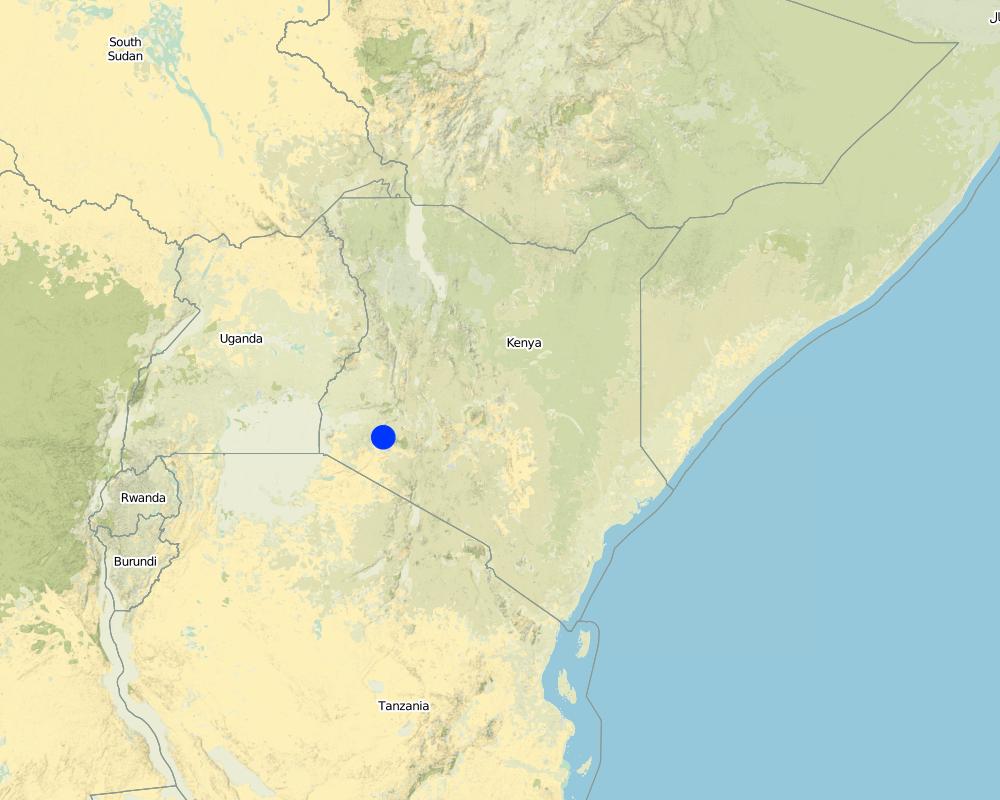Push-Pull Integrated Pest and Soil Fertility Management [Quênia]
- Criação:
- Atualização:
- Compilador/a: Julie Zähringer
- Editor: –
- Revisor: Alexandra Gavilano
technologies_958 - Quênia
- Resumo completo em PDF
- Resumo completo em PDF para impressão
- Resumo completo no navegador
- Resumo completo (sem formatação)
- Push-Pull Integrated Pest and Soil Fertility Management: 22 de Dezembro de 2016 (inactive)
- Push-Pull Integrated Pest and Soil Fertility Management: 28 de Março de 2017 (inactive)
- Push-Pull Integrated Pest and Soil Fertility Management: 12 de Maio de 2017 (inactive)
- Push-Pull Integrated Pest and Soil Fertility Management: 25 de Abril de 2019 (public)
Veja as seções
Expandir tudo Recolher tudo1. Informação geral
1.3 Condições em relação ao uso da informação documentada através de WOCAT
O/a compilador/a e a(s) pessoa(s) capacitada(s) aceitam as condições relativas ao uso de dados documentados através da WOCAT:
Sim
2. Descrição da tecnologia de GST
2.1 Descrição curta da tecnologia
Definição da tecnologia:
“Push-Pull” is a technology to efficiently control pests and progressively improves soil fertility.
2.2 Descrição detalhada da tecnologia
Descrição:
In the Lake Victoria region - like in many other parts of sub-Saharan Africa – stemborer pests, striga weeds and poor soil fertility are the main constraints to efficient production of cereals. In combination they often lead to complete crop failure. The “Push-Pull” technology efficiently controls the pests and progressively improves soil fertility. It involves intercropping maize with a repellent plant, such as desmodium (“push”); an attractant trap plant, such as napier grass (Pennisetum purpureum) is planted as a border crop around this intercrop (“pull”). The stemborer moths are attracted to volatile compounds emitted by the napier grass which at the same time serves as a haven for the borers' natural enemies. When moths lay eggs on napier grass a sticky substance secreted by the grass physically traps the moths’ larvae. Napier is also an important carbohydrate-rich fodder grass. Desmodium, a perennial cover crop, produces repellent volatile chemicals that push away the moths, and the plant effectively suppresses striga weeds through its root exudates. Furthermore, desmodium fixes nitrogen, conserves soil moisture, enhances arthropod abundance and diversity and improves soil organic matter, thereby making cereal cropping systems more resilient and adaptable to climate change. Being a low-growing plant it does not interfere with the crops' growth. Push-pull simultaneously improves cereal productivity; enables production of year-round quality fodder - thereby allowing for integration with livestock husbandry; diversifies income streams and enables smallholders to enter into the cash economy. It also improves soil fertility; protects fragile soils from erosion and enables a minimum tillage system. The technology is appropriate to resource-poor smallholder farmers as it is based on locally available plants, affordable external inputs, and fits well with traditional mixed cropping systems practiced in SSA.
2.3 Fotos da tecnologia
2.5 País/região/locais onde a tecnologia foi aplicada e que estão cobertos nesta avaliação
País:
Quênia
Região/Estado/Província:
Lake Victoria region
Map
×2.6 Data da implementação
Caso o ano exato seja desconhecido, indique a data aproximada:
- 10-50 anos atrás
2.7 Introdução da tecnologia
Especifique como a tecnologia foi introduzida:
- durante experiências/ pesquisa
3. Classificação da tecnologia de GST
3.2 Tipo(s) atualizado(s) de uso da terra onde a tecnologia foi aplicada

Terra de cultivo
- Cultura anual
Comentários:
Major land use problems (land users’ perception): Cereal pests and diseases, decline of soil organic matter and fertility
3.3 Mais informações sobre o uso da terra
Abastecimento de água para a terra na qual a tecnologia é aplicada:
- Precipitação natural
3.5 Difusão da tecnologia
Comentários:
Total area covered by the SLM Technology is 76000 m2.
3.6 Medidas de GST contendo a tecnologia

Medidas vegetativas
- V2: gramíneas e plantas herbáceas perenes

Medidas agronômicas
- A1: cobertura vegetal/do solo
Comentários:
Main measures: vegetative measures
Type of agronomic measures: mixed cropping / intercropping, contour planting / strip cropping, retaining more vegetation cover
Type of vegetative measures: aligned: -along boundary, aligned: -linear
3.7 Principais tipos de degradação da terra abordados pela tecnologia

Deteriorização química do solo
- Cn: declínio de fertilidade e teor reduzido de matéria orgânica (não causado pela erosão)

Degradação biológica
- Bh: perda dos habitats
- Bp: aumento de pragas/doenças, perda de predadores
Comentários:
Main type of degradation addressed: Cn: fertility decline and reduced organic matter content, Bh: loss of habitats, Bp: increase of pests / diseases, loss of predators
3.8 Redução, prevenção ou recuperação da degradação do solo
Especifique o objetivo da tecnologia em relação a degradação da terra:
- Reduzir a degradação do solo
- Prevenir degradação do solo
Comentários:
Main goals: prevention of land degradation, mitigation / reduction of land degradation
4. Especificações técnicas, implementação de atividades, entradas e custos
4.1 Desenho técnico da tecnologia
4.2 Especificações técnicas/ explicações do desenho técnico
Layout of push-pull plot with1 m spacing between napier border and maize field
Technical knowledge required for field staff / advisors: moderate
Technical knowledge required for land users: low
Main technical functions: increase in organic matter, increase in nutrient availability (supply, recycling,…), promotion of vegetation species and varieties (quality, eg palatable fodder), pest control
Mixed cropping / intercropping
Material/ species: Desmodium as a perennial intercrop
Remarks: Desmodium is drilled in between maize rows at 75 cm row to row distance
Contour planting / strip cropping
Material/ species: napier grass (Pennisetum purpureum)
Remarks: Spacing of napier plants should be 75 cm between rows and 50 cm between plants within a row
Aligned: -along boundary
Vegetative material: G : grass
Spacing between rows / strips / blocks (m): 75.00
Vertical interval within rows / strips / blocks (m): 50.00
Aligned: -linear
Vegetative material: C : perennial crops
Spacing between rows / strips / blocks (m): 75.00
Perennial crops species: Desmodium
Grass species: Napier grass (Pennisetum purpureum)
4.4 Atividades de implantação
| Atividade | Tipo de medida | Periodicidade | |
|---|---|---|---|
| 1. | Plant 3 consecutive rows of napier grass (Bana variety) around the plot: make planting holes, apply fertilizer (or manure), place 3-node canes or root splits, cover with soil (before rains) | Vegetativo | |
| 2. | Land preparation for desmodium: plough and harrow the land (to get fine soil), make furrows between the rows where the maize will be planted (using strong pointed stick; before rains) | Vegetativo | |
| 3. | Mix desmodium seed with super phosphate fertilizer (ratio 1:2), or alternatively with fine soil. Sow into the furrows and cover with soil (onset of rains) | Vegetativo | |
| 4. | Plant maize. / Weeding of maize, desmodium and Napier grass | Vegetativo | 3 and 5-6 weeks after planting maize |
| 5. | Manage napier grass: 1st harvest after 3 months (plants are 1-1,5 m high), leave stem height of 10 cm for quick regrow, start with inner row | Vegetativo | 1st harvest after 3 months |
4.6 Atividades recorrentes/manutenção
| Atividade | Tipo de medida | Periodicidade/frequência | |
|---|---|---|---|
| 1. | Land preparation for maize: carefully dig/plough between desmodium lines not to disturb / uproot the desmodium (it is a perennial crop!) | Vegetativo | |
| 2. | Plant maize | Vegetativo | |
| 3. | Trim the desmodium so that it does not overgrow in between the maize plants | Vegetativo | after 3 and 6 weeks |
| 4. | Repeat activities 5.-7. listed under establishment | Vegetativo |
4.7 Custos e entradas necessárias pata a manutenção/atividades recorrentes (por ano)
Comentários:
Machinery/ tools: planting stick / hoe
Size of push-pull plot for the cost calculations above = 0.25 ha.
4.8 Fatores mais importantes que afetam os custos
Descreva os fatores mais determinantes que afetam os custos:
Input prices (in US$):
1 Person-day = 1.2 US$.
1 napier root split / cane = 0.14 US$.;
1 kg desmodium seeds = 18.9 US$.;
1 kg superphosphate fertilizer = 0.68US$
5. Ambiente natural e humano
5.1 Clima
Precipitação pluviométrica anual
- <250 mm
- 251-500 mm
- 501-750 mm
- 751-1.000 mm
- 1.001-1.500 mm
- 1.501-2.000 mm
- 2.001-3.000 mm
- 3.001-4.000 mm
- > 4.000 mm
Zona agroclimática
- Subúmido
Thermal climate class: tropics
5.2 Topografia
Declividade média:
- Plano (0-2%)
- Suave ondulado (3-5%)
- Ondulado (6-10%)
- Moderadamente ondulado (11-15%)
- Forte ondulado (16-30%)
- Montanhoso (31-60%)
- Escarpado (>60%)
Formas de relevo:
- Planalto/planície
- Cumes
- Encosta de serra
- Encosta de morro
- Sopés
- Fundos de vale
Zona de altitude:
- 0-100 m s.n.m.
- 101-500 m s.n.m.
- 501-1.000 m s.n.m.
- 1.001-1.500 m s.n.m.
- 1.501-2.000 m s.n.m.
- 2.001-2.500 m s.n.m.
- 2.501-3.000 m s.n.m.
- 3.001-4.000 m s.n.m.
- > 4.000 m s.n.m.
Comentários e outras especificações sobre a topografia:
Slopes on average: flat (0-2%), gentle (3-5%), moderate (6-10%)
Landforms: plateau / plains, footslopes, valley floors
5.3 Solos
Profundidade do solo em média:
- Muito raso (0-20 cm)
- Raso (21-50 cm)
- Moderadamente profundo (51-80 cm)
- Profundo (81-120 cm)
- Muito profundo (>120 cm)
Textura do solo (solo superficial):
- Fino/pesado (argila)
- Médio (limoso, siltoso)
Matéria orgânica do solo superficial:
- Baixo (<1%)
5.6 Características dos usuários da terra que utilizam a tecnologia
Orientação de mercado do sistema de produção:
- Misto (subsistência/comercial)
- Subsistência (autoabastecimento)
Nível relativo de riqueza:
- Pobre
- Muito pobre
Indivíduos ou grupos:
- Indivíduo/unidade familiar
Nível de mecanização:
- Trabalho manual
- Tração animal
Indique outras características relevantes dos usuários da terra:
Land users applying the Technology are mainly disadvantaged land users
Difference in the involvement of women and men: some organized in informal groups
Population density: > 500 persons/km2
5.7 Média da área de terra própria ou arrendada por usuários da terra que utilizam a tecnologia
- < 0,5 ha
- 0,5-1 ha
- 1-2 ha
- 2-5 ha
- 5-15 ha
- 15-50 ha
- 50-100 ha
- 100-500 ha
- 500-1.000 ha
- 1.000-10.000 ha
- > 10.000 ha
É considerado pequena, média ou grande escala (referente ao contexto local)?
- Pequena escala
5.8 Propriedade de terra, direitos de uso da terra e de uso da água
Comentários:
Land ownership: state, communal / village, individual, not titled, individual, titled
6. Impactos e declarações finais
6.1 Impactos no local mostrados pela tecnologia
Impactos socioeconômicos
Produção
Produção agrícola
Produção de forragens
Renda e custos
Despesas com insumos agrícolas
Rendimento agrícola
Impactos ecológicos
Solo
Umidade do solo
Cobertura do solo
Perda de solo
Ciclo e recarga de nutrientes
Matéria orgânica do solo/carbono abaixo do solo
Clima e redução de riscos de desastre
Velocidade do vento
6.3 Exposição e sensibilidade da tecnologia às mudanças climáticas graduais e extremos/desastres relacionados ao clima (conforme o ponto de vista dos usuários da terra)
Comentários:
Technology is tolerant to climatic extremes.
6.4 Análise do custo-benefício
Como os benefícios se comparam aos custos de implantação (do ponto de vista dos usuários da terra)?
Retornos a curto prazo:
positivo
Retornos a longo prazo:
muito positivo
Como os benefícios se comparam aos custos recorrentes/de manutenção(do ponto de vista dos usuários da terra)?
Retornos a curto prazo:
positivo
Retornos a longo prazo:
muito positivo
6.5 Adoção da tecnologia
Comentários:
100% of land user families have adopted the Technology without any external material support
There is a strong trend towards spontaneous adoption of the Technology
Comments on adoption trend: To date it has been adopted by over 29,000 smallholder farmers in East Africa, mostly without incentives. Where the technology is being introduced for the first time, farmers only need demonstration and technology information
6.7 Pontos fortes/vantagens/oportunidades da tecnologia
| Pontos fortes/vantagens/oportunidades na visão do/a compilador/a ou de outra pessoa capacitada |
|---|
| Improves cereal productivity |
| Enables production of year-round quality fodder - thereby allowing for integration with livestock husbandry |
| Diversifies income streams and enables smallholders to enter into the cash economy |
| Improves soil fertility; protects fragile soils from erosion and enables a minimum tillage system |
| The technology is appropriate to resource-poor smallholder farmers as it is based on locally available plants, affordable external inputs, and fits well with traditional mixed cropping systems practiced in SSA. |
6.8 Pontos fracos, desvantagens/riscos da tecnologia e formas de superá-los
| Pontos fracos/desvantagens/riscos na visão do usuário da terra | Como eles podem ser superados? |
|---|---|
| Napier grass is an aggressive plant that spreads through rhizomes under the ground | regular control and weeding. |
| The older napier stems and leaves are less palatable for livestock | regularly cut young, tender leaves and stems. |
| Minor adjustment of the smallholder farming system to introduce desmodium in traditional maize-bean intercrops | desmodium (fodder crop) and beans (food crop, important protein source) can both be intercropped with maize. In areas where striga weed is not a problem, farmers can plant desmodium after every 3 or 5 rows of maize, and use the other rows for beans. Stemborers will still be repelled |
7. Referências e links
7.2 Referências às publicações disponíveis
Título, autor, ano, ISBN:
Prof. Zeyaur R. Khan (Principal Scientist and Programme Leader) and Jimmy Pittchar, Push-pull Programme, International Centre of Insect Physiology & Ecology (ICIPE), Mbita Point, Kenya; zkhan@mbita.mimcom.net; jpittchar@mbita.mimcom.net; jpittchar@icipe.org
Links e módulos
Expandir tudo Recolher tudoLinks
Não há links
Módulos
Não há módulos







